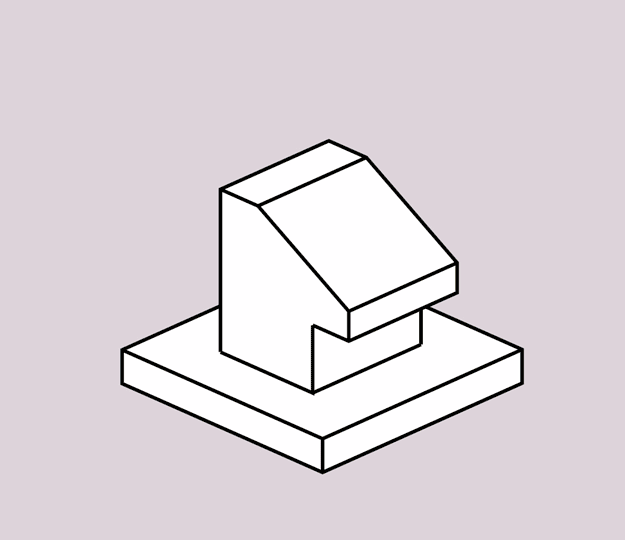
DAT PAT Guide
Aperture / Keyhole (KH) Questions
What is a keyhole problem?
Keyhole problems are the first group of problems that appear on the perceptual ability test (PAT) of the dental admissions test (DAT) and comprise Items 1-15. For each keyhole problem, you will be shown an object on the left, and you have to pick an aperture that the object fits through perfectly, if sent on a straight trajectory without being rotated or turned.

The object then must be sent through the aperture on a straight path. It cannot be turned or twisted during its movement through the aperture. And, the object must pass completely and perfectly through the opening. Below is an example of a possible aperture the object can be sent through on a straight trajectory.

The object may be turned in any direction prior to passing the object through the aperture. It may also be started through the aperture on a side not shown. For instance, the object can be moved through the aperture from side to side, top to bottom, bottom to top, front to back, or back to front.
The correct aperture is always the exact shape and size of the external outline of the object. Both objects and apertures are drawn to the same scale in problem images. Thus, it is possible for the opening to be the correct shape but too small for the object, but differences are large enough to judge by eye.
There are no irregularities in any hidden portion of the object. If the figure appears to have symmetrical indentations, protrusions, or other features, you can assume that the hidden portion is completely symmetric with the part shown.
For each object, there is only one correct aperture in the answer choices.
Note: Directions given on test day may be formatted differently, but objectives are the same.
What apertures are possible?
The DAT problems only really require you to assess 3 main apertures: the front-back, top-bottom, and side-side, like those shown below. However, because the object can be moved in the opposite direction, the inversions of these apertures (e.g. back-front, bottom-top, and reverse side-side shown below) are also correct. So, when you get to a keyhole problem, just envision the 3 standard apertures and realize that the correct answer may also be inverted compared to what you’re picturing.
Incorrect apertures, like the examples at the bottom, often resemble correct apertures, except they are not quite correctly shaped - being misshapen or having the wrong proportions.

Correct apertures may also be presented in a rotated orientation compared to the object’s resting position. This is because the object can be rotated in any way prior to passing it through the aperture.

Example problem
Here is a typical keyhole problem you’d encounter on your DAT, along with an Erudition-style explanation to help you understand how to solve it. (You can study detailed explanations on all the problems in our course.)

The first thing you want to do when you see a keyhole problem is to visualized the 3 standard apertures (front-back apertures, side-side apertures, and top-bottom apertures). You can see the possible apertures below, but consult the rotating object if you’re having a hard time visualizing them.


Choice D matches our side-side aperture. From the side-side perspective, you cannot see any of the object’s slanted edges. Instead, the top of the object creates a rectangular silhouette.

Choice D also accurately shows the narrow base, and how far it protrudes on either side.

A: This aperture is similar to the side-side view of the object. However, its base is not wide enough compared to the top of the object.

B: This aperture is similar to the top-bottom view of the object. However, its shape suggests that the top section extends past the edge of the base, which it does not.

C: This aperture is similar to the front-back view of the object. However, its top section has the wrong shape and extends too far in relation to the edge of the base.

E: This aperture is similar to the front-back view of the object. However, the top of the front face is far too wide compared to the true front-back view.

Keyhole tips and strategies!
When you get to a problem, analyze the three basic apertures first. Quickly eliminate the answer choices that clearly do not match these apertures.

Make sure to look at RELATIVE sizes and positions of parts of the object. This is a lot easier than looking at absolute widths or lengths, for instance, since these can look smaller or larger when the object is turned.

Make sure that angles are correct - focus on the corners of the object to see if they appear to connect edges that sit at right angles to each other.

Look at the positions of things in relation to each other; for instance, see if points line up the correct way or not.


Also check out PAT videos we’ve shared on YouTube!
Check out our free YouTube videos or upgrade your account on pat.eruditionprep.com to access our full course videos!
PAT problem guides
Additional links to our resources

